
24.06.2022
A new process of social struggle is developing in multiple places of the Ecuadorian territory since June 13, when the Confederation of Indigenous Nationalities of Ecuador [Confederación de Nacionalidades Indígenas del Ecuador – CONAIE] called for a national mobilization in order to obtain answers from the government of Guillermo Lasso, after a year of unanswered social demands.
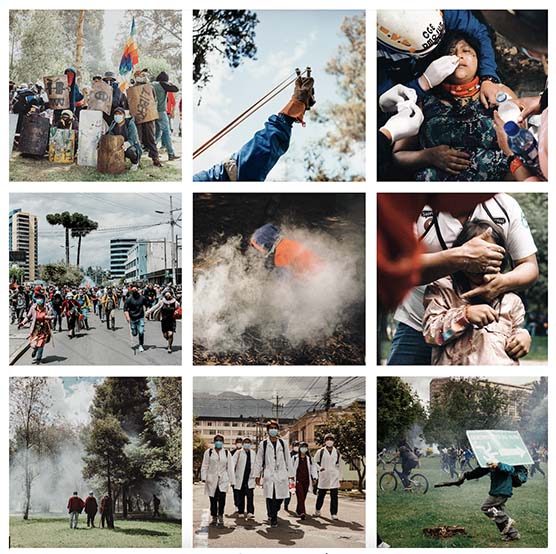
Ten priority issues make up the document formally delivered by the CONAIE to the President of the Republic. Where the ones that stand out are the repeal of Decrees N°1158 for the liberation of fuel imports; N°1183 which empowers the ARC (Agency for Regulation and Control of Non-Renewable Energy and Resources) to fix fuel prices and N°1054 which establishes the price band system; the collection of tax debts from large economic power groups; a moratorium on loans of farmers, small producers and traders held in private and state banks; ensured access to education at all levels in rural areas of the country; cease of mining and oil exploitation within water collection areas and territories of peoples and nationalities; and rejection of labor flexibilization, lack of job security, and precarious situation of workers; among others.
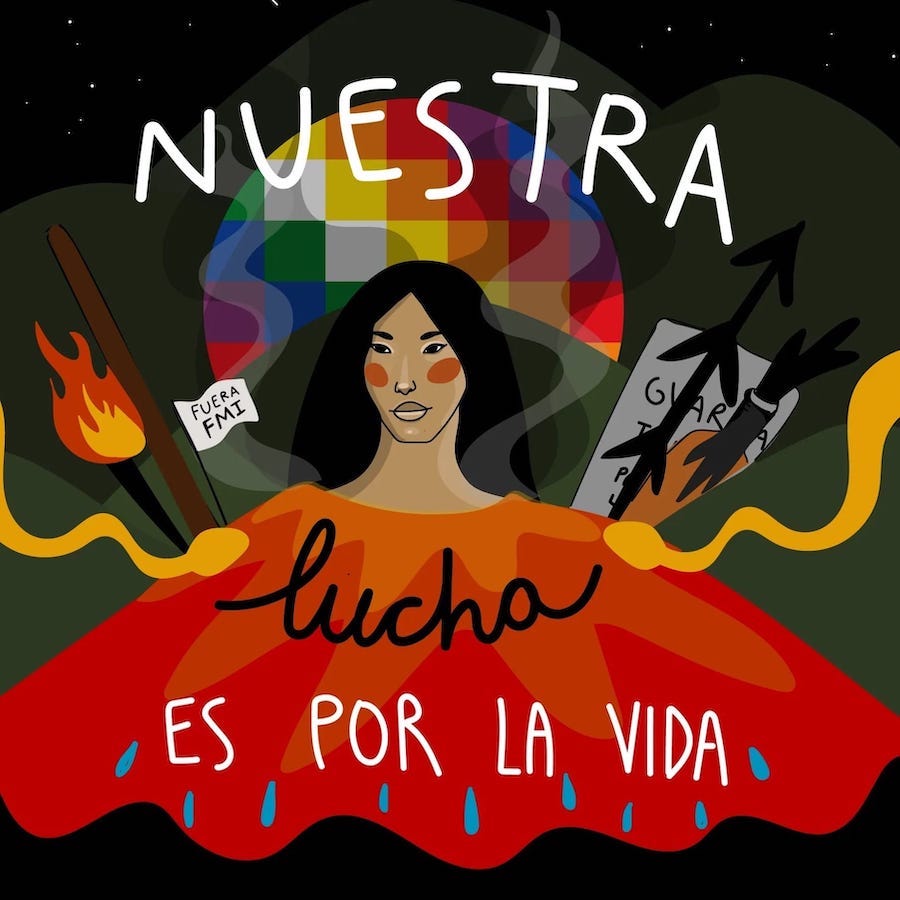
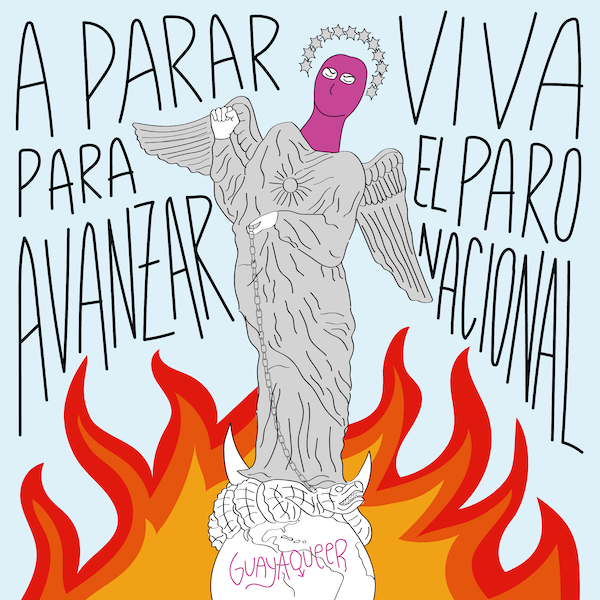
Various indigenous, peasant, student, feminist, environmental and cultural organizations have joined the CONAIE’s call. In spite of the plea of the indigenous leadership to protest peacefully, the strike has not been without acts of vandalism, looting and confrontations between demonstrators and the excessive use of force by the police, which so far has left dozens injured and three people dead: Jhonny Felix Muenala, Byron Guatatatuca, and Henry Quezada.
On June 19, police raided the main office of the Casa de las Culturas Ecuatorianas [House of Ecuadorian Cultures – CCE], after the Attorney General’s Office authorized this measure following a report of the “presumed existence of explosive material” in its facilities. The inspection did not corroborate the existence of any warlike device. The security forces remained there until June 23, when a march led by women from indigenous communities of Ecuador reached the agora of the CCE, turning it once again into a meeting place for social mobilization.
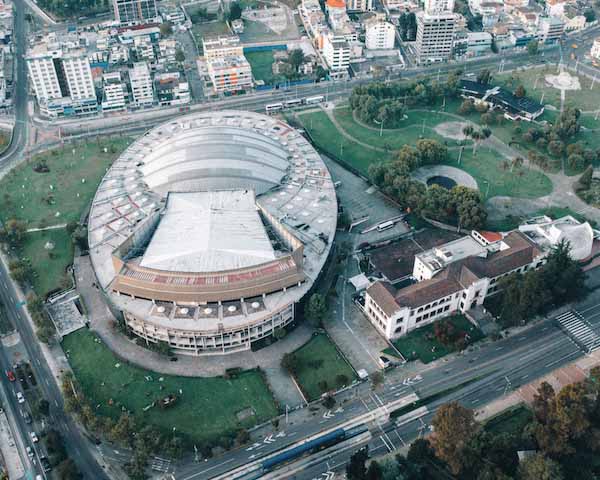
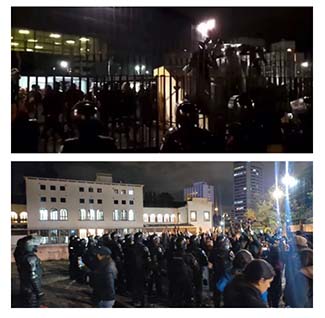
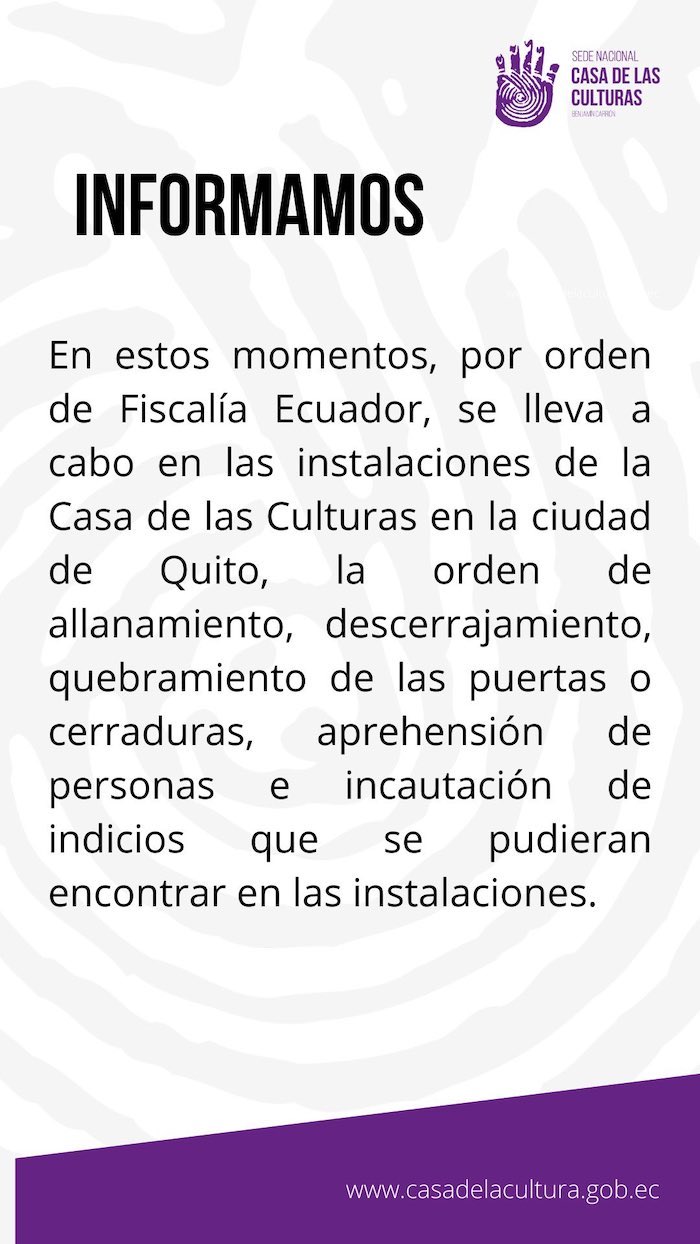
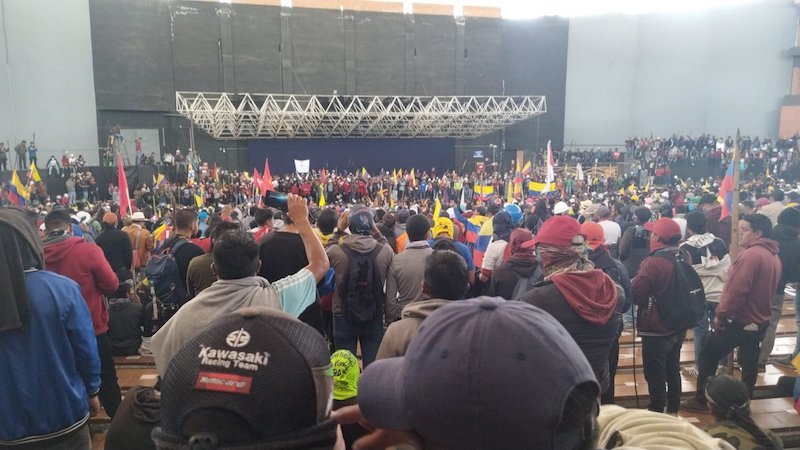
Several cultural figures published a “Call for non-aggression and non-interference in Ecuadorian cultural institutions” on June 20th, rejecting the police action that violated the autonomy of the CCE and impeded its function as a space for memory, negotiation and dialogue. That same day, the president of the CCE, Fernando Cerón, asked the National Assembly to repeal the decree that establishes the State of Exception in several provinces of the country, during Session 779 of the Legislative Plenary, with the goal that the Police vacate the facilities of this cultural institution. Cerón states:
“Yesterday the Ecuadorian State trampled on the right of its people to do and say what we feel in the space that permits and guarantees diversity, thought, creation, [and] the arts. It is the first time that the police have occupied the CCE. The police entered and found costumes from plays, books, while a policeman with special equipment to look for bombs, searched in the middle of the library of the Casa de la Cultura, looking for an explosive or warlike object. That is what this State of Exception has exposed us to.”
It’s important to remember that during the National Strike of October 2019, which took place in Ecuador, the headquarters of the Casa de la Cultura was converted into a refuge for indigenous communities that mobilized to Quito to demand the repeal of decree 883. Issued by the ex-president Lenin Moreno, it stated several economic reforms. The most controversial reform was the elimination of the fuel subsidy that would affect the economy of the country’s working class. During those days, the CCE functioned as a peace space next to El Arbolito Park, which since the 90’s has been a meeting place for indigenous organizations mobilized during processes of social struggle.
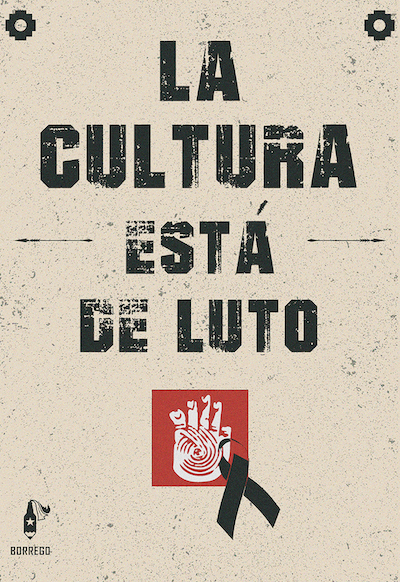
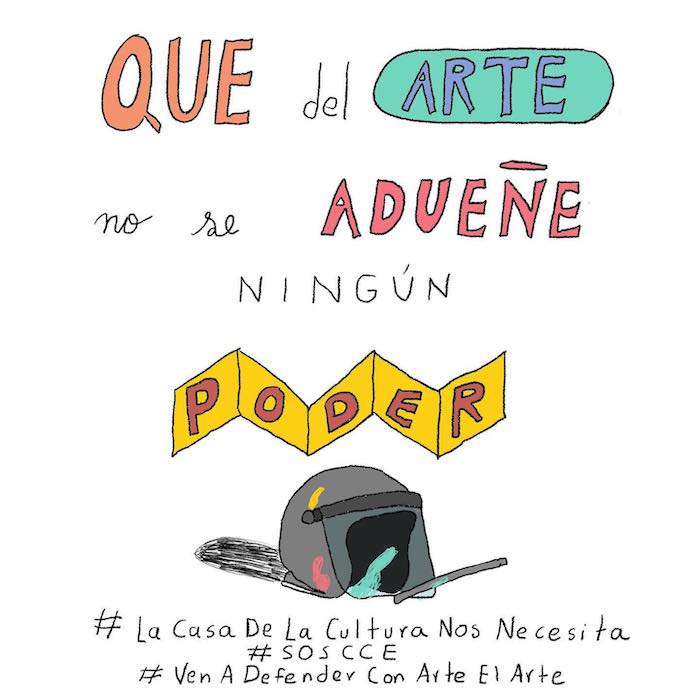
Article 152 from Ecuador’s Organic Law of Culture states: “The Casa de la Cultura Ecuatoriana Benjamín Carrión is the space for common meeting, for cohabitation and for the exercise of cultural rights, where cultural and artistic diversity, collective memory and interculturality is expressed”. Furthermore, it guards important collections of patrimonial goods and bibliographic reserves.
Universidad Andina Simón Bolívar faculty member Santiago Cabrera, adds:
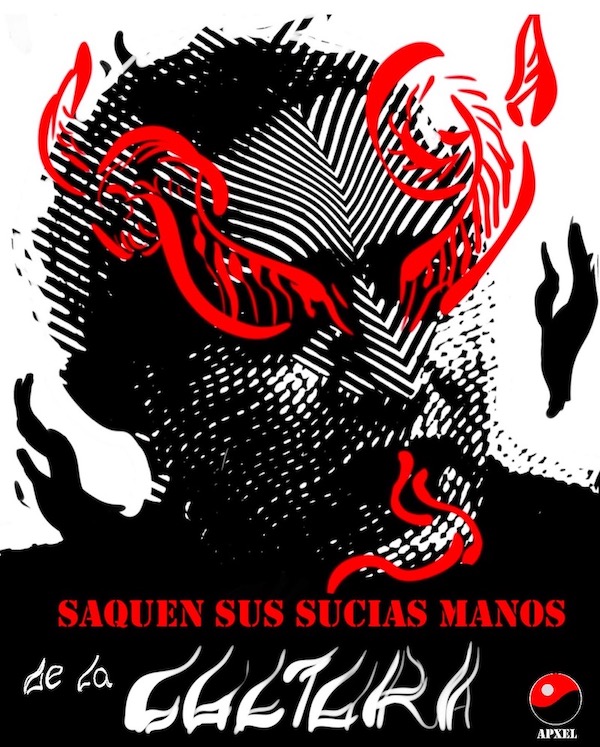
The imposition of military and police forces at the Casa de la Cultura Ecuatoriana over its social and cultural use is a gesture of material and symbolic violence. It states an infamous inversion of the ulterior significance of this iconic complex in which the Ecuadorian State has the obligation of fulfilling the cultural rights established in the constitution, even more so in times of social unrest. What happened is a flagrant violation of this institution’s autonomy, generating a concerning precedent for the future. It represents a transgression on the historic memory of past struggles and social processes that have made the Casa de la Cultura Ecuatoriana a legitimate place of expression.

As Francois Laso, director at Centro Cultural Metropolitano (Metropolitan Cultural Center), has stated, the relation between cities and the indigenous rural world is deeply defined by culture. In that sense the symbolic fracture produced by the occupation of Casa de la Cultura is a serious jeopardy for any attempt to dialogue between the different social actors of in the National Strike.
In the words of the director of the Museum and Herbarium System of the Universidad Central del Ecuador, Susan Rocha:
The usage of Casa de la Cultura facilities during the 2019 National Strike by the Indigenous Movements and other social organizations was successfully developed because of the dialogue between CONAIE and the authorities of the CCE which supported their cause. The occupation executed by the police and the military now has an additional feature: the control of the CCE’s Headquarters was taken from its president. The dispute around this institution doesn’t exclude El Arbolito Park, a relevant location for the organizations and the social protests. The territory in which both of these places are situated is geographically strategic, but for the most part they exercise a relevant symbolic function as home for the memory of various diverse social struggles.
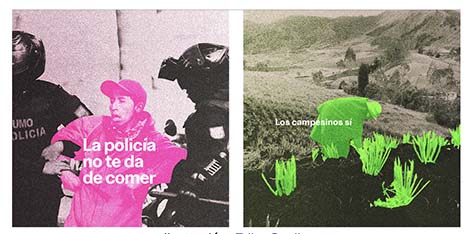
During this embarrassing occupation dangerous signals emerged: culture must withdraw in the presence of police and military forces, “places of memory” can by violated symbolically with complete impunity, a culture of arbitrariness and physical force are capable of displacing the small triumphs in cultural matters achieved by the Ecuadorian people throughout its history, showing a disregard for the value of institutional autonomy.
In a similar way, since the 14th of June, the Metropolitan Cultural Center’s (Centro Cultural Metropolitano – CCM) north courtyard has been used by members of the Armed Forces, as a logistics base from 18h00 to 6h00. Although strictly speaking it doesn’t function as military quarters, it remains a violent image that the Armed Forces temporarily inhabit what should be regarded as a space of peace. The location of this institution, which belongs to the Municipality of Quito and houses collections of patrimonial goods, is key since it is in Quito’s historic center, next to the headquarters of the Presidency. Other buildings in the area are also used for similar social purposes. Since the National Strike (Paro Nacional) began on June 13th, the sector has been guarded by police and military; access streets to the Main Plaza (Plaza Grande) have been blocked with fences and wires.
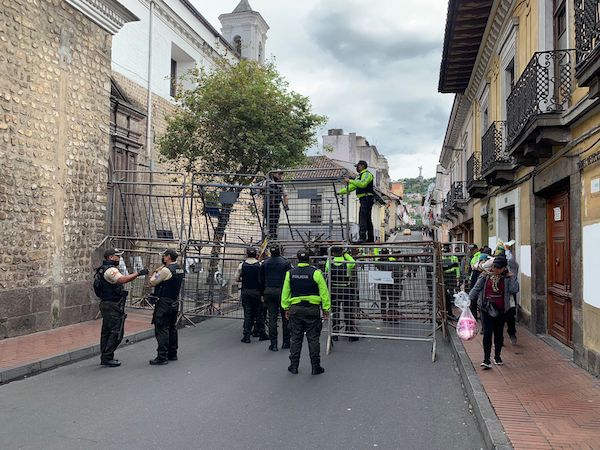
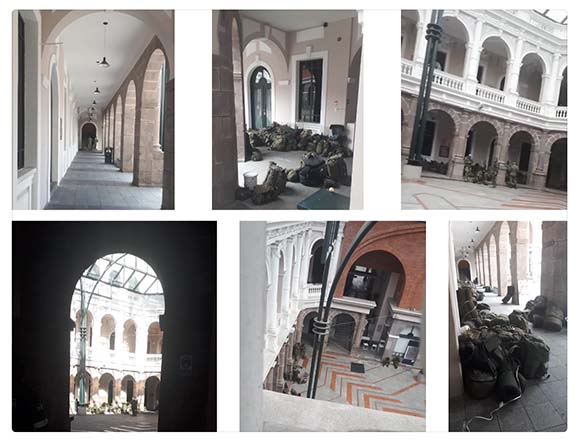

According to Manai Kowii, a Kichwa artist and member of the Warmi Muyu and Sumak Ruray groups, “the illegitimate occupation of the Casa de la Cultura by the police, and of the many courtyards of the Metropolitan Cultural Center by military forces, constitute the lowest acts in our history. Taking these spaces implies an attack on our country’s culture. We are in mourning as artists and cultural organizers; however, art will always be present in the vindication process of our people”.
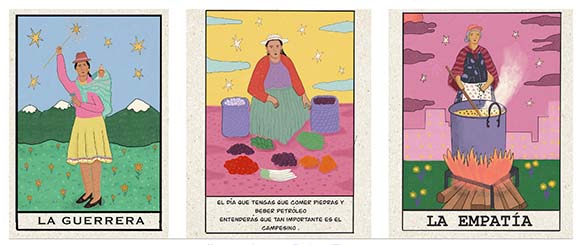
According to Christian Viteri, director of the Plastic and Visual Arts career at the Faculty of Arts within the Central University of Ecuador (Universidad Central del Ecuador – UCE), “Taking cultural institutions by storm and expelling their workers evidences the establishment of fear as an exercise that articulates the discourse of state power. The neglect of the cultural sector becomes evident when the interests of the State prioritize establishing and preserving panoptic terror regimes”.
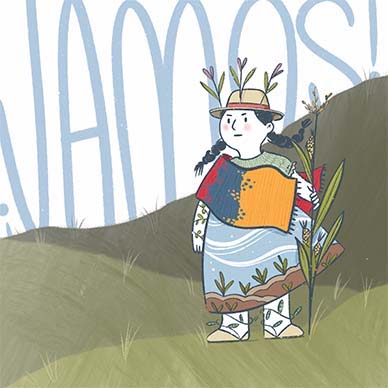
By imposing their sign of repression on them, the people are faced with the “quartering” of culture that the Ecuadorian Government has exercised by militarizing both cultural institutions, especially the Casa de la Cultura. It is necessary to demand that the minimum democratic agreements and constitutional rights be respected. Allowing their authorities to decide, together with the communities they represent, what role they can play during the mobilizations within the framework of the laws and regulations that govern them.
This begs the question regarding the role of cultural reflection at the moment, in a country where the governing class is incapable of embracing the legacy of our aboriginal communities and recognizing their equality of constitutional rights; a governing class who mistrusts the ability of indigenous organizations to speak for themselves, denying the possibility of their self-determination; a governing class unable to see the articulation these organizations have with popular sectors that identify with their demands; and a governing class that disposes the use of force as a mechanism of control, when what’s needed with great urgency is to establish dialogue with the CONAIE in order to achieve concrete results regarding the topics of major interest that have been presented to improve the economic and social situation of the most vulnerable people in the country.
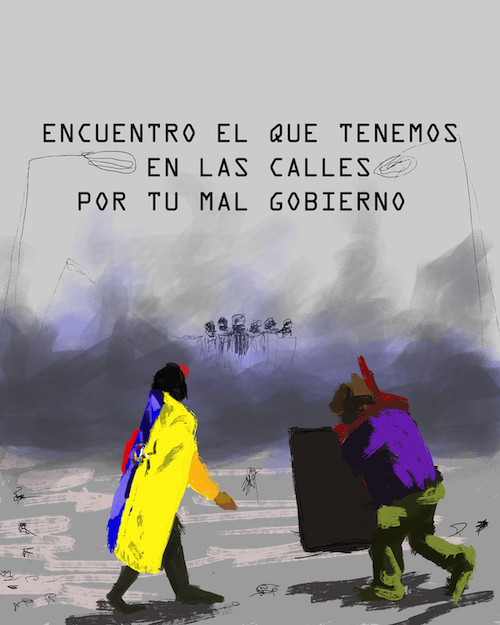
—Ana Rosa Valdez
La Mariscal, Quito, June 23th
Translation by Libbi Ponce, Juan Felipe Paredes, César Delgado y Fernando Montenegro
Comments
There are no coments available.